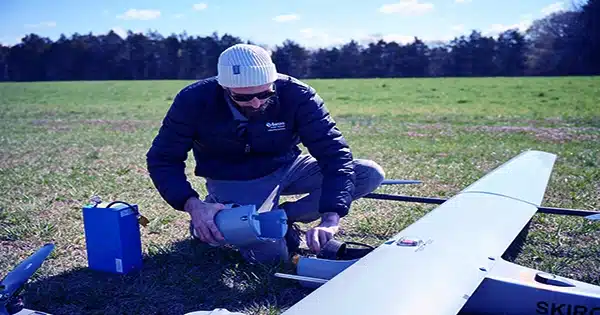The Defense Advanced Research Projects Agency has approved Aurora Flight Sciences’ plans to build a full-scale model of the X-65, an experimental unmanned aircraft meant to fly without flaps, rudders, or other exterior-moving elements.
Aurora stated on Wednesday that it had successfully passed the critical design review and had begun manufacturing the drone as part of DARPA’s Control of Revolutionary Aircraft with Novel Effectors (CRANE) program, which aims to prove and mature active flow control (AFC) technology.
The Virginia-based business and the Pentagon agency hope to undertake the first flight of the X-plane in the summer of 2025.
“As we progress into the manufacturing phase, we are getting closer to achieving our aim of proving AFC technology and helping to open up the design trade space for future applications. “The X-65 has the potential to change the future of aircraft design,” Kevin Uleck, CRANE program director at Aurora Flight Sciences, a Boeing subsidiary, stated.

The X-65’s sleek, aerodynamic design includes AFC effectors on the platform’s flying surfaces that regulate roll, pitch, and yaw. The technology enables operators to control the system using bursts of air rather than external moving pieces like wing flaps and tail rudders seen on most modern airplanes.
According to DARPA, deleting these items could improve future aircraft performance by lowering weight, drag, and mechanical complexity.
“The X-65 is a technology demonstrator, and its distinctive, diamond-like wing shape is designed to help us maximize what we can learn about AFC in full-scale, real-world tests,” Richard Wlezien, DARPA’s CRANE program manager, said in a statement.
In 2021, the government selected Aurora Flight Sciences and Lockheed Martin to do preliminary design work for the first phase of the CRANE program. Aurora finally advanced to phase 2 as the only contractor, getting a $42 million contract in 2023 to finish comprehensive design work and create flying software and controls. The deal also allowed for a phase 3 manufacturing timeframe.
According to DARPA, the full-scale X-65 constructed in phase 3 will weigh over 7,000 pounds, have a 30-foot wingspan, and be capable of reaching speeds of up to Mach 0.7 – around 537 mph. The modular design will have removable outboard wings and AFC effectors, allowing multiple AFC designs to be tested on the X-plane in the future.
The demonstrator aircraft will have mechanical flaps and rudders to serve as a benchmark for the platform’s performance, as well as AFC effectors to replace moving surfaces during the testing cycle.
“The X-65 conventional surfaces are like training wheels to help us understand how AFC can be used in place of traditional flaps and rudders,” Wlezien said in a press release. “We’ll have sensors in place to monitor how the AFC effectors’ performance compares with traditional control mechanisms, and these data will help us better understand how AFC could revolutionize both military and commercial craft in the future.”















